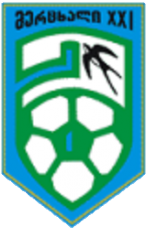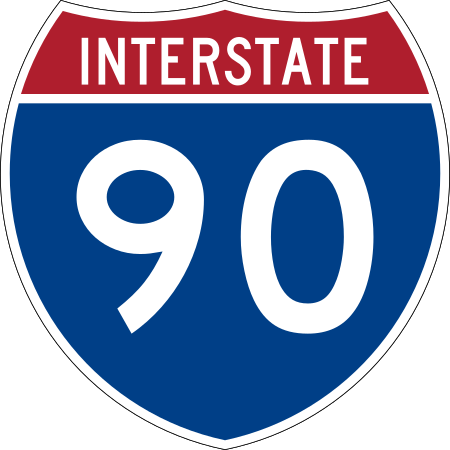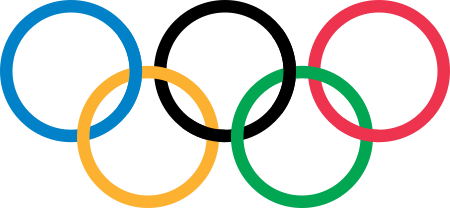Plasma cutting
|
Read other articles:

Untuk negara yang berakhir pada 1803, lihat Kepangeranan-Keuskupan Basel. Keuskupan BaselDioecesis BasileensisBistum BaselKatolik Katedral Solothurn, tahta keuskupanLokasiNegara SwissWilayahAargau, Basel-Country, Basel-City, Berne, Jura, Lucerne, Schaffhausen, Solothurn, Thurgau, dan ZugProvinsi gerejawiSubyek langsung Tahta SuciStatistikLuas12.585 km2 (4.859 sq mi)Populasi- Total- Katolik(per 2015)31810001,123,000 (35.3%)Paroki520Imam675InformasiDenominas…

この項目には、一部のコンピュータや閲覧ソフトで表示できない文字が含まれています(詳細)。 数字の大字(だいじ)は、漢数字の一種。通常用いる単純な字形の漢数字(小字)の代わりに同じ音の別の漢字を用いるものである。 概要 壱万円日本銀行券(「壱」が大字) 弐千円日本銀行券(「弐」が大字) 漢数字には「一」「二」「三」と続く小字と、「壱」「弐」…

Об Аврааме в исламской традиции см. Ибрахим. У этого термина существуют и другие значения, см. Авраам (значения). Авраамдр.-евр. אַבְרָהָם Праведный Авраам. Современная икона Пол мужской Период жизни по иудейской традиции:1812—1637 до н. э.[1]по православной:2…

Tunggal putri pada Kejuaraan Dunia BWF 2023LokasiRoyal ArenaLokasiKopenhagen, DenmarkTanggal21–27 AgustusPeserta47 dari 30 negaraPeraih medali An Se-young Korea Selatan Carolina Marín Spanyol Chen Yufei Tiongkok Akane Yamaguchi Jepang ← Tokyo 2022Paris 2025 → Kategori di Kejuaraan Dunia BWF 2023TunggalputraputriGandaputraputricampuranlbs Turnamen tunggal putri pada Kejuaraan Dunia BWF …

Former command of the Royal Air Force RAF Training CommandRAF Training Command badgeActive1936–19401968–1977Country United KingdomBranch Royal Air ForceTypeCommandRoleAir TrainingGarrison/HQBuntingsdale Hall, Market Drayton (1936-1940)RAF Shinfield Park, Reading (1968-1977)Motto(s)Terra Caeloque Docemus (Latin: We teach on Land and in the Air)[1]Military unit Training Command was the Royal Air Force's command responsible for flying and ground training from 1936 to 1940 and again …

此條目介紹的是2012年在上海创办的一家民营新闻媒体。关于1946年在上海创刊的一份周刊,请见「观察 (杂志)」。关于2013年在上海创办、原名「上海觀察」的网络应用程序,请见「上觀新聞」。关于“观察者”的其他含义,请见「观察者」。 此條目過於依赖第一手来源。 (2021年1月17日)请補充第二手及第三手來源,以改善这篇条目。 观察者网观察者网首页在2019年7月3�…

Hot dog restaurant chain in New York City Gray's PapayaGray's Papaya former midtown locationIndustryFast food restaurantFounded1973; 51 years ago (1973) in New York CityFounderNicholas GrayNumber of locations1 (2020)Area servedNew York City Gray's Papaya is a hot dog restaurant located at 2090 Broadway at 72nd Street in New York City.[1] It had other locations, all of which had closed by June 2020.[2][1] Gray's Papaya is famous for its inexpensive h…

هذه المقالة عن المجموعة العرقية الأتراك وليس عن من يحملون جنسية الجمهورية التركية أتراكTürkler (بالتركية) التعداد الكليالتعداد 70~83 مليون نسمةمناطق الوجود المميزةالبلد القائمة ... تركياألمانياسورياالعراقبلغارياالولايات المتحدةفرنساالمملكة المتحدةهولنداالنمساأسترالياب…

Sculpture by Augustus Saint-Gaudens in Boston, Massachusetts, U.S. Robert Gould Shaw MemorialArtistAugustus Saint-GaudensYear1884 (1884)TypeBronzeDimensions3.4 m × 4.3 m (11 ft × 14 ft)LocationBoston, Massachusetts, U.S.Coordinates42°21′27″N 71°3′48.6″W / 42.35750°N 71.063500°W / 42.35750; -71.063500OwnerNational Park Service The Memorial to Robert Gould Shaw and the Massachusetts Fifty-Fourth Regiment is a bron…

Lokeshwar Singh Panta Hakim Mahkamah Agung IndiaMasa jabatan03-02-2006–23-04-2009 Informasi pribadiKebangsaanIndiaProfesiHakimSunting kotak info • L • B Lokeshwar Singh Panta adalah hakim Mahkamah Agung India. Ia mulai menjabat sebagai hakim di mahkamah tersebut pada 03-02-2006. Masa baktinya sebagai hakim berakhir pada 23-04-2009.[1] Referensi ^ Daftar Hakim di Mahkamah Agung India. Mahkamah Agung India. Diakses tanggal 10 Juni 2021. Artikel bertopik biografi India…

此條目需要补充更多来源。 (2021年7月4日)请协助補充多方面可靠来源以改善这篇条目,无法查证的内容可能會因為异议提出而被移除。致使用者:请搜索一下条目的标题(来源搜索:美国众议院 — 网页、新闻、书籍、学术、图像),以检查网络上是否存在该主题的更多可靠来源(判定指引)。 美國眾議院 United States House of Representatives第118届美国国会众议院徽章 众议院旗帜…

American businessman and politician Joe MaloneMalone in 201054th Treasurer and Receiver-General of MassachusettsIn officeJanuary 3, 1991 – January 7, 1999GovernorWilliam WeldPaul CellucciPreceded byRobert CraneSucceeded byShannon O'Brien Personal detailsBornJoseph Daniel Malone (1954-11-18) November 18, 1954 (age 69)Newton, Massachusetts, U.S.Political partyRepublican (Before 2013)Independent (2013–present)EducationHarvard University (BA)WebsiteCampaign website Joseph Daniel Ma…

Kejuaraan klub ASEANPenyelenggaraAFFMulai digelar2003; 21 tahun lalu (2003)WilayahAsia TenggaraJumlah timKompetisi sebenarnya: 12Total: 15Juara bertahan Tampines Rovers (2005)Tim tersukses1 gelar Kingfisher East Bengal Tampines Rovers Kejuaraan klub ASEAN 2024-25 Kejuaraan klub ASEAN (bahasa Inggris: ASEAN Club Championship) adalah kompetisi sepak bola dwi tahunan antar klub-klub juara domestik negara-negara ASEAN yang dikelola oleh AFF.[1] Hasil No. Musim Pemenang Skor Juara Ke…

Football clubFootball Club Mertskhali OzurgetiFounded1936GroundMegobroba Stadium Ozurgeti, GeorgiaCapacity3,500ManagerDavit SurguladzeLeagueLiga 420231st of 13, Regionuli Liga Group C (promoted) Home colours Away colours FC Mertskhali (Georgian: საფეხბურთო კლუბი მერცხალი ოზურგეთი; English: Swallows) is a Georgian association football club from Ozurgeti. Following the 2023 season, the team won Group C of the regional league and ear…

American stock exchange This article is about the stock exchange. For its parent company, see Intercontinental Exchange. For the headquarters building, see New York Stock Exchange Building. New York Stock ExchangeTypeStock exchangeLocationNew York City, U.S.Coordinates40°42′25″N 74°0′40″W / 40.70694°N 74.01111°W / 40.70694; -74.01111FoundedMay 17, 1792; 232 years ago (1792-05-17)[1]OwnerIntercontinental ExchangeKey people Sharon …

Seventh Pharaoh of the Eighteenth dynasty of Egypt Amenhotep IIAmenophis IIAmenhotep II standing before Osiris.PharaohReign1427–1401 BC or 1427–1397 BCPredecessorThutmose IIISuccessorThutmose IVRoyal titulary Horus name Ka nakht wer pekhtykꜢ nḫt wr-pḥtyVictorious bull, great of might[1] Nebty name Weser fau, sekha em wasetwsr fꜢw sḫꜤi m wꜢstRich in splendor, who has been made to appear in Thebes[1] Golden Horus Ity sekhem.ef em tau nebuiṯi sḫm.f m t�…

Alexandrian satrapy in Afghanistan and Pakistan This article is about the Alexandrian satrapy in Afghanistan and Pakistan. For the Mountain range in northwestern Afghanistan, see Paropamisus Mountains. Part of a series on the History of Afghanistan Timeline Ancient Indus Valley Civilisation 2200–1800 BC Oxus Civilization 2100–1800 BC Gandhara Kingdom 1500–535 BC Median Empire 728–550 BC Achaemenid Empire 550–330 BC Macedonian Empire 330–312 BC Seleucid Empire 312–150 BC Maurya Empi…

Township in Minnesota, United StatesDewald Township, MinnesotaTownshipDewald Township, MinnesotaLocation within the state of MinnesotaShow map of MinnesotaDewald Township, MinnesotaDewald Township, Minnesota (the United States)Show map of the United StatesCoordinates: 43°37′33″N 95°45′51″W / 43.62583°N 95.76417°W / 43.62583; -95.76417CountryUnited StatesStateMinnesotaCountyNoblesArea • Total36.0 sq mi (93.3 km2) • Land36.…

Congressional district in Quezon Province, Philippines 3rd Congressional District of Quezon ProvinceConstituencyfor the House of Representatives of the PhilippinesBoundary of Quezon's 3rd congressional district in QuezonLocation of Quezon within the PhilippinesProvinceQuezonRegionRegion IV-A (Calabarzon)Population446,711 (2020)[1]Electorate290,045 (2022)[2]Major settlements 12 Municipalities Agdangan Buenavista Catanauan General Luna Macalelon Mulanay Padre Burgos Pitogo San Andr…

Sporting event delegationAlgeria at the2008 Summer OlympicsIOC codeALGNOCAlgerian Olympic CommitteeWebsitewww.coa.dzin BeijingCompetitors62 in 13 sportsFlag bearers Salim Iles (opening)Abdelhafid Benchabla (closing)MedalsRanked 64th Gold 0 Silver 1 Bronze 1 Total 2 Summer Olympics appearances (overview)1964196819721976198019841988199219962000200420082012201620202024Other related appearances France (1896–1960) Algeria competed in the 2008 Summer Olympics, held in Beijing, People's Rep…



